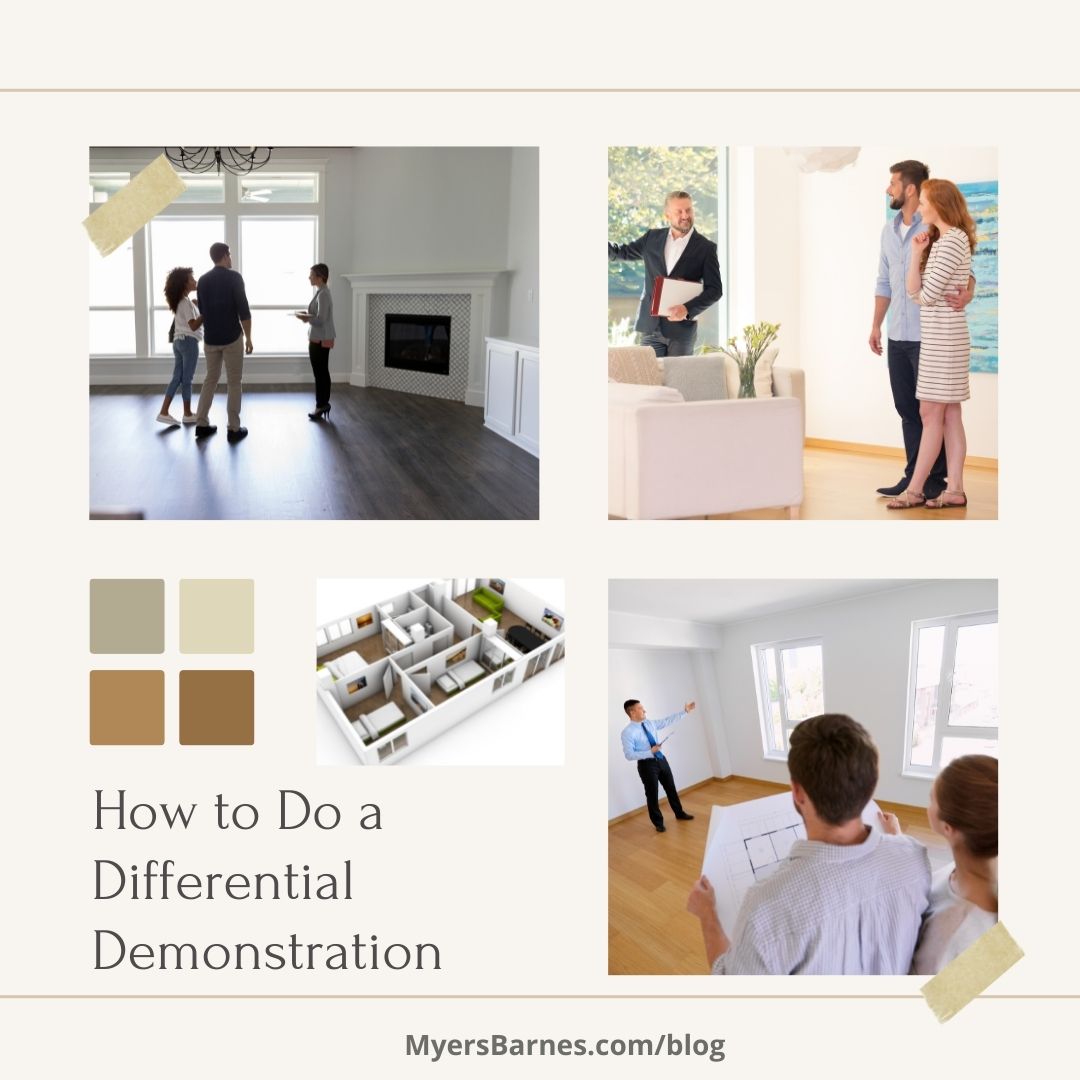 There are some purchases that warrant a thoughtful sales presentation, guiding the buyer to a passionate desire to buy. A car, a boat, expensive jewelry, and a home are a few of them. You don’t expect or want the salesperson to tell you to look it over on your own. You want a skilled, knowledgeable pro to walk you through the reasons you need to buy this item.
There are some purchases that warrant a thoughtful sales presentation, guiding the buyer to a passionate desire to buy. A car, a boat, expensive jewelry, and a home are a few of them. You don’t expect or want the salesperson to tell you to look it over on your own. You want a skilled, knowledgeable pro to walk you through the reasons you need to buy this item.
Not all salespeople have mastered the art of differential demonstration in new home sales—and they’re missing out on a massive opportunity!
The difference of being differential
Demonstrating a model home effectively is a selling skill, and one that can be learned. There is a pattern, a method, and a thought process to successfully presenting a new home. It involves recognizing the hot buttons in the buyer and pushing them with finesse. You differentially demonstrate by reminding them of the many ways that this particular home suits them and the needs they’ve communicated to you.
The process of differential demonstration gives you a more purposeful sales presentation. You guide the prospective new home buyer into the mindset from browser to homeowner. You do this by encouraging them to envision living in this home, with their family, their furniture, and their pictures on the walls. They can see themselves cooking in the kitchen, enjoying a long soak in the tub, and entertaining friends in the backyard. With your gentle help, they’re already planning how to decorate for the holidays!
From room to room, you communicate the noteworthy features of a new home in a way that strikes a spark with the potential buyer. Explain the lifestyle advantages of the features you’re presenting. For example, if they have a growing family, you point out the backyard play area, the open floor plan that provides a comfortable gathering space, and the second-floor laundry. For someone who is downsizing, you show that the space is easier to manage, while still offering comfort, luxury, space, and ample storage.
Ask the right questions
Here are some differential demonstration questions you can ask your buyer as you work your way through the presentation.
In the kitchen:
Can you imagine yourself preparing your family’s favorite meals in this kitchen?
Wouldn’t all this cabinet space and huge pantry be a real plus for you?
How would you use this island?
In the living room:
Where would you put your sofa in this room?
How would you set up this open concept to entertain?
In the master suite:
Where would you place your bed and dressers?
How would you divide up this walk-in closet?
Wouldn’t it be nice to have a bathroom that’s so easy to share?
In the children’s rooms:
Which of your children gets this room?
In the flex room:
How can you see yourself using this room? For guests? A home office? Maybe an exercise room?
In the garage:
Would your workshop fit well here?
In the backyard:
What do you like to do when you’re outside? How does this yard fit with what you want to do?
Can you see yourself relaxing back here?
The differential path
We use a planned route with a differential demonstration. Always guide your prospective homebuyer to enter through the front door, even if it’s more convenient from the sales office to pass through another doorway. Before you enter, stand back and point them toward the view from the front of the home, where they can experience the curb appeal.
From the entry, you follow a pre-planned path that gives a sneak peek at the kitchen and living room, but only for a brief moment. Your demonstration is intent on rising to a crescendo—building the anticipation of the most sought-after space. Go through the other areas on the main floor and then come back around to the all-important hub.
While you may be tempted to let your buyer pull you to the parts of the home they most want to see, it’s your job to control the presentation. Once you let them veer off the path of differential demonstration, you’ve abandoned a tried-and-true process. When they start to detour from your planned route, reel them back in with, “I understand your excitement and we’ll definitely take a look but let me show you this first.” Do your best to manage the situation. Practicing is essential to doing this with confidence. If you need help or have questions, please reach out to me.


